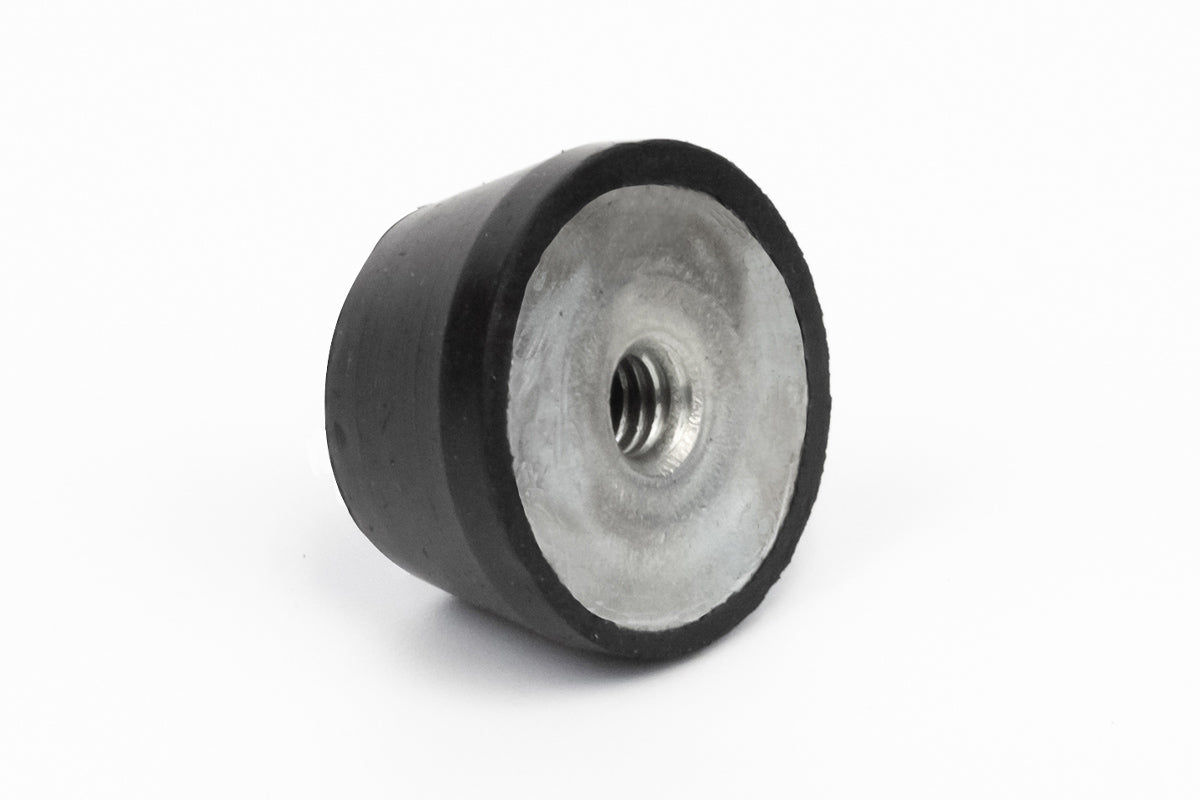

Description

Rubber feet with a single large end and a female insert. These rubber feet can be used in a similar way to male – one end only parts. Often used as bumpers, typically incorporated into applications at intervals to protect from striking or bumping, and under some circumstances used to support static load, tapered styles are sometimes preferred for stability and precision.
Inventory Rubber Bumper Feet
- Typically used as anti-vibration isolation pads that require the properties of synthetic or natural rubber
- Applications by industry for female large end only anti-vibration rubber feet; industrial, aerospace, automotive, OEM, transportation, construction, healthcare, research, oil, and gas
- Sample product applications for industrial vibration isolators, machine vibration isolation, HVAC, vacuum, engine, aerospace, motors, fans, medical equipment, and electronics
- Often referred to as anti-vibration isolation pads, rubber mounts, vibration isolation pads, anti-vibration rubber mounts, vibration isolation mounts, rubber isolation mounts, rubber vibration isolator, rubber engine mounts, spring vibration isolators, rubber motor mounts
What Are The Benefits of Rubber Feet?
Rubber feet offer several benefits, including:
- Vibration Damping: Rubber feet can reduce vibrations and noise, making them useful in applications where stability and reduced noise are essential.
- Surface Protection: They prevent scratches and damage to surfaces and floors.
- Slip Resistance: Rubber feet provide grip and prevent items from slipping or sliding on smooth surfaces.
- Shock Absorption: They help absorb shocks and impact, protecting sensitive equipment and reducing wear and tear.
- Elevation and Airflow: Rubber feet can raise equipment slightly, allowing for better airflow and preventing overheating.
- Easy Installation: They are simple to install and replace, making them a convenient solution for various applications.
How Are Rubber Feet Manufactured?
Rubber feet are manufactured by mixing selected rubber materials with additives, molding the compound into desired shapes using molds, curing it through heat or chemicals, trimming to the correct dimensions, inspecting for quality, and finally packaging for distribution. The process may vary based on the rubber type and design complexity.
What Do Isolation Feet Do?
Rubber isolation feet are used to isolate and reduce vibrations and shocks in various applications. Isolation feet minimize the transfer of vibrations from one component to another or to the surrounding environment, improving stability and reducing noise. They protect sensitive equipment from external vibrations that could impact their performance or longevity. By reducing vibrations and shocks, isolation feet can enhance the performance and accuracy of machinery, instruments, and other equipment.


